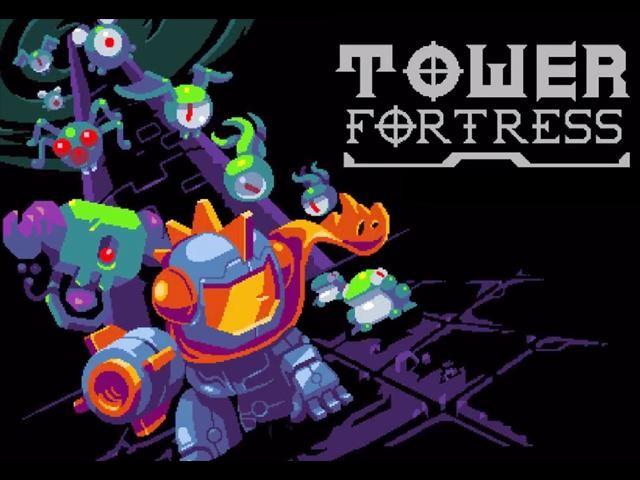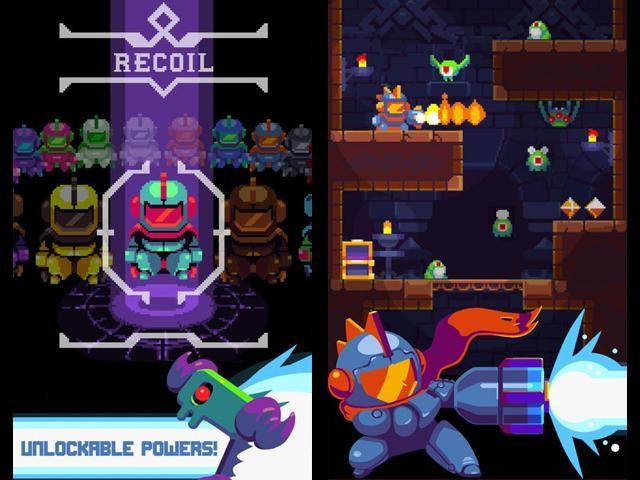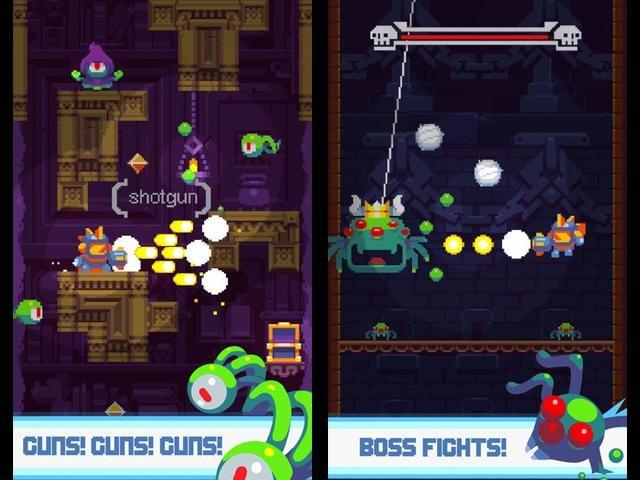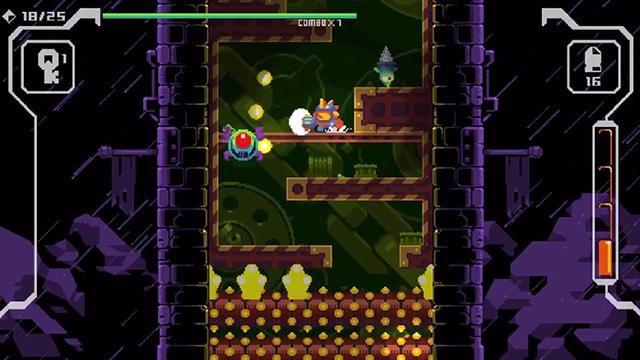‘Tower Fortress’ is a fantastic Pinoy-made 2D platformer shooter
Thanks to the massive influence classic 2D platformers have had on our gamer lives, retro will always have a place in contemporary gaming.
And it’s a good thing, too, that the retro gaming phenomenon exists. Otherwise, excellent titles such as the Pinoy-made “Tower Fortress” would never see the light of day.
Published by Nitrome, “Tower Fortress” was developed by Bari Silvestre, the man behind Keybol Games, and casual gems such as “Overtake King” and the award-winning “Kill the Plumber.”
With his latest offering, he has taken his game development to the next level, allowing him to create an experience that fuses some of the best aspects of beloved IPs such as “Mega Man,” “Contra,” and even “Sonic the Hedgehog.”

Onwards and upwards
“Tower Fortress” is a roguelike 2D platformer and shooter. It puts you in the boots of a helmeted hero and tasks you with ascending a dark tower brimming with all manner of nasties.
Given the premise, the platforming is vertical, with every level having you journeying upwards until you reach a teleporter that takes you to the next step in your quest.
Along the way, you’ll encounter traps like spinning blades and spikes, and monsters such as one-eyed bats, ghosts, floating demon heads, and worse. You’ll even have to fight huge and terrifying bosses, who will give you the toughest and tensest moments in the game.
You aren’t helpless, of course. Like Mega Man, you are, by default, armed with a blaster. But you can open chests to acquire even more powerful weapons, allowing you to melt faces with a blistering laser or use a shotgun to poke giant holes in enemies. The odd bubble gun may lack the intimidation factor, but as it lets loose a stream of bubbles that float upwards, it’s one of the most useful firearms in your arsenal. Weapons only get more exotic the further up the tower you go.
Your jumping skills also put other platforming heroes to shame. You can double-jump, with the second jump transforming you into a spinning, bladed ball of death – a fine nod to Sonic, indeed. You can touch and then slide slowly down a wall, or make your way up that wall by repeatedly jumping against it.
Killing enemies will sometimes reward you with keys. These open locked doors at the end of each level, giving you access to upgrades. The upgrade types are numerous, and some have more potent effects than others. For example, one raises your maximum health, while another just heals one bar of health. Others raise your ammo capacity, instantly revive you upon your first death, and more.
Additionally, you can use the gems dropped by vanquished monsters to buy new suits that grant you special abilities. There’s one that lets you perform triple jumps, and one that doubles the value of gems. Many come with cons to go along with the pros. For instance, a suit that boosts gun damage also reduces your maximum health by one bar.

Because “Tower Fortress” is such a challenging game, you’ll need more than those upgrades to excel; you’ll need dexterous fingers for all those timely jumps, weapon blasts, dodges, and changes in direction, as well as the ability to keep calm amidst chaos. There are times enemies will come at you from every angle – a situation you won’t survive without quick action and a cool, collected attitude.
Currently, “Tower Fortress” boasts four distinct zones, each consisting of a number of levels. Levels are procedurally generated, so every playthrough is unique.
The visuals are gloriously old school, with pixelated characters and environments straight out of an '80s Nintendo console. Together with the 8-bit music and sound effects, “Tower Fortress” envelops you in a deliciously foreboding atmosphere that should bring the earlier “Castlevania” or “Metroid” games to mind.

A rocky start
The initial phase of “Tower Fortress’ ” development was no bed of roses. Silvestre was forced to ditch Flash – the software he’d been using to develop games for over 7 years – for a new engine.
“I just started learning Game Maker last year and when the game-breaking bugs came, I had a hard time getting rid of them,” he admitted. “I thought these bugs were impossible to fix that time.”
After finding work as a full-time consultant and producer in 2016, Silvestre was forced to put “Tower Fortress” on hold.
“After the contract ended I decided to go full indie again and returned to working on the game. It was then I had a fresh mindset so I recreated everything from scratch.”
Going international
Things started looking up once Silvestre got acquainted with Nitrome, a UK-based publisher of indie video games.
Silvestre was able to gain Nitrome’s attention early in the game’s development.
“It all started when Nitrome was liking and sharing my tweets related to the development of the game,” said Silvestre.
Silvestre was about to release “Tower Fortress” in March 2017 when he changed his mind and instead contacted Nitrome to work out a possible collaboration.
“(Nitrome) said they liked (“Tower Fortress”) and wanted to change some of the graphics like the background and UI,” explained Silvestre.
As Silvestre and Nitrome worked together to overhaul the game’s graphics, their mutual respect grew.
“The relationship we built is more than a just publisher-developer one,” Silvestre expressed. “It felt like I was a partner and we valued each other’s opinions to make the game better.”
Three artists worked on the game’s visuals: Matthew Annal, Markus Heinel, and fellow Filipino Mike Studios a.k.a. Mike Renevo.
Hailing from Bicol, Renevo is a game developer known for “Dungeon Souls.” His contributions to “Tower Fortress” are significant, as he originally defined the look of its characters, enemies, and environments.
“When Nitrome started working on the game, the owner Mat Annal remade the graphics into their style. He then passed it on to one of their in-house artists, Markus, who worked on the animations and other details.”
In charge of the game’s audio design was Zach Striefel, while Filipino game developer Khail Santia served as the QA Lead.
The collaboration with Nitrome was crucial to the evolution of “Tower Fortress” into the slick, top-quality game it is today.

“I’m very happy and honored to have worked with them,” stated Silvestre.
“Tower Fortress” is to become a major Keybol franchise.
“I have many plans for the game and its wonderful characters,” said Silvestre. “Hopefully they come to fruition.”
For now, Silvestre assures more suits, guns, and buffs are on the way.
“I also want to add extra levels in between areas,” he added. “To get to them, I want to place secret rooms behind breakable walls in the main levels. If you find the 3 new levels you unlock a full new area with a more epic final boss."
As of writing, “Tower Fortress” has already been downloaded more than 250,000 times since its November 16, 2017 mobile release. It has made it to the top 200 games charts in a number of regions, and garnered the attention of several prominent YouTube Let’s Players.
“Tower Fortress” is available on the Apple App Store and Google Play Store. It will be launched on Steam this November 20.




